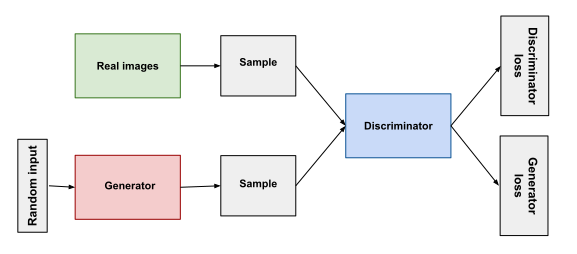
Welcome to DHS Informatics! We specialize in offering the latest 2024-2025 IEEE GAN Projects also GAN Python Image Processing Projects, including a variety of GAN Deep Learning and Machine Learning Projects tailored for final year engineering students in CSE, IS, ECE, AI & ML, and DS. Through our OJT (On Job Training) program, we provide comprehensive project training and placement support in Bangalore, facilitating access to job opportunities in leading IT companies. With over two decades of experience, we’ve been delivering high-quality IEEE projects to BE/B.Tech, M.Tech, MCA, BCA, and Diploma students.
Committed to excellence and student satisfaction, we offer innovative IEEE GANs Projects, ensuring our students stay ahead in their field. Our IEEE Python Image Analysis Projects initiatives encompass developments, programs, ventures, and solutions, keeping you updated with the latest advancements in GAN technology.
Explore our extensive range of projects, from IEEE Python Image Analysis to Digital Image Projects. Dive into GAN-powered, driven, and enabled projects, as well as GAN Deep Learning and Machine Learning Projects initiatives, designed to equip you with the latest industry-relevant knowledge and skills.
With our expertise and dedication, we strive to empower students to excel in the dynamic fields of AI, ML, and DL.
Generative Adversarial Network (GAN)
A Generative Adversarial Network (GAN) is a powerful machine learning (ML) model that utilizes a unique architecture, pitting two neural networks against each other in a competitive manner to enhance their predictive capabilities. GANs, a cornerstone of deep learning, operate in an unsupervised manner, employing a cooperative zero-sum game framework to facilitate learning.
Applications of GANs
GANs have a myriad of applications, including the detection of glaucomatous images for early diagnosis, which is critical in preventing partial or total vision loss. Moreover, GANs can augment insufficient training datasets by generating synthetic images. They excel in various tasks such as generating lifelike photographs of human faces, synthesizing images from text descriptions, enhancing video resolution, and even producing high-fidelity audio or performing voice translations.
Overview of GAN Structure
A GAN comprises two essential components: the generator and the discriminator. The generator learns to produce realistic data, while the discriminator distinguishes between real and fake data. Through adversarial training, the generator aims to generate increasingly plausible data, while the discriminator strives to improve its discrimination ability.
IEEE Python Image Processing Projects
Explore our IEEE Python Image Processing Projects designed to equip students with practical skills in image analysis, manipulation, and visualization using Python.
GAN Projects
Discover our diverse range of GAN Projects, including GAN-Based Projects and GAN Deep Learning Projects, aimed at advancing your understanding and expertise in generative adversarial networks.
GAN-Based Projects
Dive into our GAN-Based Projects tailored to provide hands-on experience in utilizing GANs for various applications, from image generation to data augmentation.
GAN Deep Learning Projects
Embark on our GAN Deep Learning Projects to delve deeper into the intersection of deep learning and generative adversarial networks, exploring cutting-edge techniques and methodologies.
GAN Machine Learning Projects
Join our GAN Machine Learning Projects to gain practical insights into leveraging GANs for enhancing machine learning tasks, from image classification to anomaly detection.

Both the generator and the discriminator are neural networks. The generator output is connected directly to the discriminator input. Through backpropagation, the discriminator’s classification provides a signal that the generator uses to update its weights.
Advantages of GANs over Other Generative Models
GANs today dominate over all other generative models. Let’s see why:
Data labelling is an expensive task. GANs are unsupervised, so no labelled data is required to train them.
GANs currently generate the sharpest images. Adversarial training makes this possible. Blurry images produced by Mean Squared Error stand no chance before a GAN.
Both the networks in GAN can be trained using only backpropagation, making them highly efficient for various applications, including IEEE Python Image Processing Projects in fields like ECE, CSE, AI, and DE.
IEEE 2024 – 2025 GAN PROJECTS
IEEE 2024 -2025 GAN PROJECTS
In this paper, we address the challenge of achieving image super-resolution, aiming to generate a high-resolution and noise-free image from a low-resolution and noisy input. Recent advancements in deep learning have significantly contributed to solving image restoration problems. However, producing a high-quality image from a noisy, low-resolution input remains challenging due to the difficulty of distinguishing fine texture details from noise. Conventional super-resolution algorithms tend to amplify noise along with image details. To address this issue, we propose a super-resolution network that is robust to noise by utilizing a parallel architecture with multiple modules. Experimental results demonstrate that our proposed network effectively restores noise-free, high-texture images from noisy, low-resolution inputs, outperforming other methods.
Contact: +91-9845166723 +91-9886692401 Download Base Paper  Download Synopsis
Download Synopsis
Our objective is to create high-resolution animated images (cartoons) from real images, a task that is highly challenging and valuable in the fields of computer vision and computer graphics. Traditional techniques are time-consuming and require an artistic mindset, often failing to produce satisfactory results. By analyzing the characteristics of cartoon paintings, we have identified three key components: (1) surface representation, (2) structure representation, and (3) texture representation. Our model first decomposes the real image into these components and then learns from the decomposed image. We utilize a Generative Adversarial Network (GAN) framework, specifically Cartoon GAN, to learn from real-world images and transform them into cartoonized images
Contact: +91-9845166723 +91-9886692401 Download Base Paper  Download Synopsis
Download Synopsis
Text images are crucial for various applications, but recognizing low-resolution text images poses a significant challenge. Most existing methods address this issue using a two-step cascaded approach: image super-resolution followed by high-resolution text recognition. In this paper, we introduce a novel framework called SRR-GAN, which integrates text recognition with super-resolution through adversarial learning. By jointly training the recognition and super-resolution models, SRR-GAN learns more comprehensive features from images of varying quality, resulting in high recognition performance for both high-resolution and low-resolution images. Experiments on natural scene and handwritten texts demonstrate that SRR-GAN outperforms the cascaded approach on low-resolution images, improving recognition accuracies by 10%-20% across five datasets of scene and handwritten texts. Additionally, SRR-GAN maintains high performance on high-resolution images.
Contact: +91-9845166723 +91-9886692401 Download Base Paper  Download Synopsis
Download Synopsis
Image dehazing aims to enhance the quality of images affected by haze. Numerous techniques have been developed to improve hazy images, with Convolutional Neural Networks (CNN) being the most widely used. Recently, the FFA Net method has been employed for image dehazing, focusing primarily on processing duration, achieving a PSNR ratio of 35.59. In our work, we introduce the Mix Dehaze Net method, a CNN-based approach that significantly outperforms FFA Net in image quality, boasting a PSNR ratio of 42.62. Mix Dehaze Net leverages the strengths of multiple dehazing models to effectively tackle the challenges posed by varying atmospheric conditions. By integrating deep learning techniques, this network enhances visibility and improves image quality in hazy environments. Experimental results highlight Mix Dehaze Net’s superior dehazing performance compared to existing methods, demonstrating its potential as an advanced solution for image dehazing in diverse scenarios. Therefore, we propose the Mix Dehaze Net technique for image dehazing.


